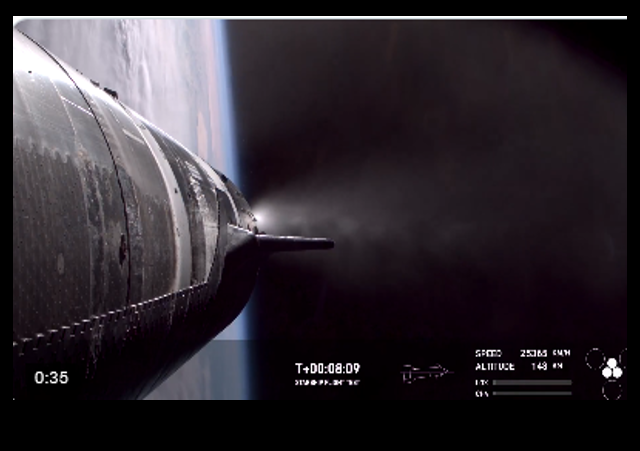SpaceX Successfully Launches Sixth Starship Test Flight

SpaceX launched its massive Starship rocket on its sixth test flight on Tuesday.
And while it was hoped that the test would include another successful booster catch, conditions were not conducive to doing so.
SpaceX’s 400-foot-tall (122 meters) Starship megarocket lifted off for the sixth time ever today (Nov. 19), rising off the orbital launch mount at the company’s Starbase site in South Texas at 5:00 p.m. EST (2200 GMT; 4:00 p.m. local Texas time).SpaceX landed Starship’s huge first-stage booster, known as Super Heavy, back at the launch tower on the vehicle’s most recent flight, which occurred on Oct. 13. The company aimed to repeat that feat — which the tower achieved with its “chopstick” arms — today, but the flight data didn’t support an attempt.”We tripped a commit criteria,” SpaceX’s Dan Huot said during the company’s Flight 6 webcast. So Super Heavy ended up coming down for a controlled splashdown in the Gulf of Mexico instead, hitting the waves seven minutes after liftoff.
This launch was a crucial test for SpaceX’s ambitious space exploration plans. Presidet-elect Donald Trump attended the launch.
Among other things, Trump’s appearance signals that serious space travel research will be prioritized.
Although he and Mr. Musk only recently became close allies, Mr. Trump had long expressed admiration for Mr. Musk’s rocket launches and would frequently reference SpaceX during campaign speeches.The SpaceX launch on Tuesday is a pivotal one for Mr. Musk’s aspirations. It is the sixth test of its Starship rocket, the largest ever built, which Mr. Musk also hopes will deliver more of his communications satellites into orbit; carry NASA astronauts to the moon; and, eventually, take humans to Mars.
It is hard to contain the optimism for those who appreciate space exploration.
Despite the lack of the booster catch, the Starship test achieved one significant milestone — the reigniting of one of the Raptor engines in space.
SpaceX tried this on Starship’s third launch in March but aborted the engine restart after the rocket lost roll control during the flight’s coast phase.A successful engine relight demonstration would pave the way for future Starships to ascend into stable, sustainable orbits. It’s essential to test the Raptor engine’s ability to reignite in space for a deorbit burn to steer Starship out of orbit toward an atmospheric reentry.
It is important to note that Raptor runs on liquid methane and liquid oxygen, unlike SpaceX’s previous Merlin engines, which used RP-1 kerosene fuel. Methane offers higher efficiency and aligns with SpaceX’s Mars colonization goals, as it can potentially be produced on Mars.
SpaceX also conducted an important test of heat tile capabilities with this launch, regarding their placement with an eye to future booster-rocket-catch developments.
After the engine re-ignition, the next phase of Starship’s entry was passing through the Earth’s atmosphere and during peak entry heating. For the ship that flew on Flight 6, this phase was particularly important since SpaceX had conducted limited upgrades to the heat shield tiles as compared to the ship that flew on Starship Flight 5.However, the firm did add secondary insulation to the upper stage Starship spacecraft and left the heat shield off certain regions of the ship to evaluate locations for future catch hardware. These regions could potentially see SpaceX add components to the ship to catch it with the tower, as it plans to do with the Super Heavy booster.
There is currently no test date set for the seventh test launch, as the timing depends on many factors. But it should be noted that the turnaround time between the 5th and 6th flights was just over five weeks, which is the fastest turnaround between Starship/Super Heavy test flights so far.
Hopefully, Musk can bring this passion for innovation and drive for excellence back to NASA.
CLICK HERE FOR FULL VERSION OF THIS STORY